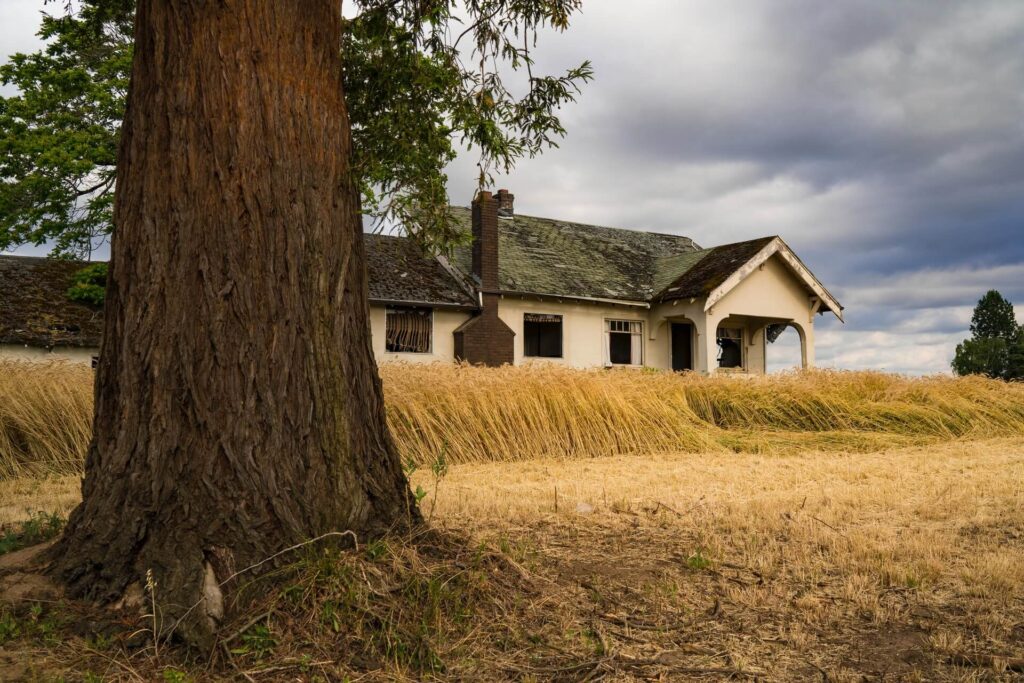So you are in a hurry to get rid of your house, but you also know that preparing it for sale would cost more than you can afford.
Because of the creaking floors, the roof leaks, and the mildew in the cellar, you wonder, “Is there anything I can do that is not too expensive or time-consuming?” Fortunately, there is!
Those concerned about selling a home in need of major repairs should read this article. We will go through how to fix up a rundown house, but we will also talk about what you can do with it once it is fixed.
Advertisement - Story continues below
Request advertising info. View All.
What do we mean by bad condition?
A property in bad condition may include structural difficulties, visible ceiling leaks, weather damage, black mold, or an active insect infestation, depending on the specifics. The majority of the time, when you hear the phrase “poor condition,” you are thinking about something more superficial, like soiled tiles, outdated moldings, peeling paint, or an overgrown garden.
We have split down the definition ‘bad condition’ into three separate sub-categories to assist you in figuring out whether you are selling a property in terrible condition or one that just needs a bit of work to get it looking superb.
Totally inhabitable
One or more major safety violations are generally required for a property to be fully uninhabitable. Issues that might arise include:
- Black mold
- Cracks in the foundations
- The presence of asbestos and/or lead
- Unusable plumbing
- Exposed wiring
Needs urgent work
Despite being livable, properties in this category are in desperate need of cosmetic and structural improvements. Despite the fact that it may be livable, a house inspector is sure to point up numerous severe flaws. Issues that might arise include:
- The HVAC system is unreliable.
- Damaged plumbing
- Damaged chimney
- Lights not working properly
- A little amount of roof damage
- The building’s foundation is showing signs of wear and tear.
- Infestation of wood paneling with mold and mildew.
In need of cosmetic repair and general repair
These homes may have a rough exterior, but they are built on strong foundations and have sturdy construction. This is a regular occurrence. Overdue repairs and/or a neglected maintenance schedule are definitely the causes of your home’s inclusion on this list. Issues that might arise include:
- Soiled flooring
- Overgrown exteriors
- Wood paneling has developed a small amount of decay.
- Smelly faucets that have turned green over time
- The presence of a dead switch or outlet
When it comes to attracting buyers and house inspectors, professional presentation and imaginative staging may make all the difference.
If a house does not sell, what is the most likely culprit?
Contrary to popular assumption, poor research is the most prevalent cause of a property’s failure to sell. Local purchasers are unlikely to acquire a house if its asking price is too high.
Setting a reasonable reserve price is essential if you want to prevent a dormant listing. This is especially true if you attempt to persuade potential buyers to put down a deposit on a home with significant cosmetic flaws. It is best to consult with a registered appraiser or a professional real estate agent for help determining an accurate listing price.
Things you should not fix before listing your home for sale
Routine repairs and maintenance are usually not necessary in most circumstances. However, unless you speak with purchasers, you will not know for sure what you should and should not alter.
Pre-purchase house inspection reports may lead to talks concerning repairs after a buyer makes an offer. Alternatively, the buyer may use the state of your house as a bargaining chip in order to get a lower deal.
Selling a home that needs extensive repairs
To get the most money while selling your property, you will need to do some work. We have included the three most popular strategies to sell a property that is in a bad state of repair below.
Shell out for the big repairs
A competitive market may necessitate that you spend money on renovations if you want to sell your house. Repairing only a few key issues may have a significant impact on a home’s marketability and potential buyers’ interest.
Put a focus on cosmetic repairs
Most of the time, you will receive more value for your money by investing in modest repairs and aesthetic adjustments. If you are having difficulties keeping customers interested when they enter your store, it is possible that your interior design is not up to snuff. Refinishing worn cabinets, repainting the interior walls, and replacing obsolete fixtures are all low-cost ways to remedy this problem.
Sell ‘As-Is,’
When sellers are strapped for time, cash, or motivation, they may opt for a “as-is” sale. With a “as-is” sale, you are making it clear that the buyer is responsible for any substantial repairs. Please keep in mind, however, that you are still required by law to notify any issues with the residence that you become aware of.
Can a non-compliant house be sold?
There are exceptions to this rule, but you need to be upfront with buyers about any and all infractions. You are required by law to disclose any and all infractions of the building code. If you don’t, you might be held liable for any losses the customer suffers as a result of the infringement.
Is it possible to sell a home that is in disrepair?
Yes. Make it presentable and appealing by doing the work yourself or by hiring local contractors. You can choose to sell your property quickly if you lack the necessary resources, such as time or money, or if the task seems too onerous.
Photo by Dan Meyers
